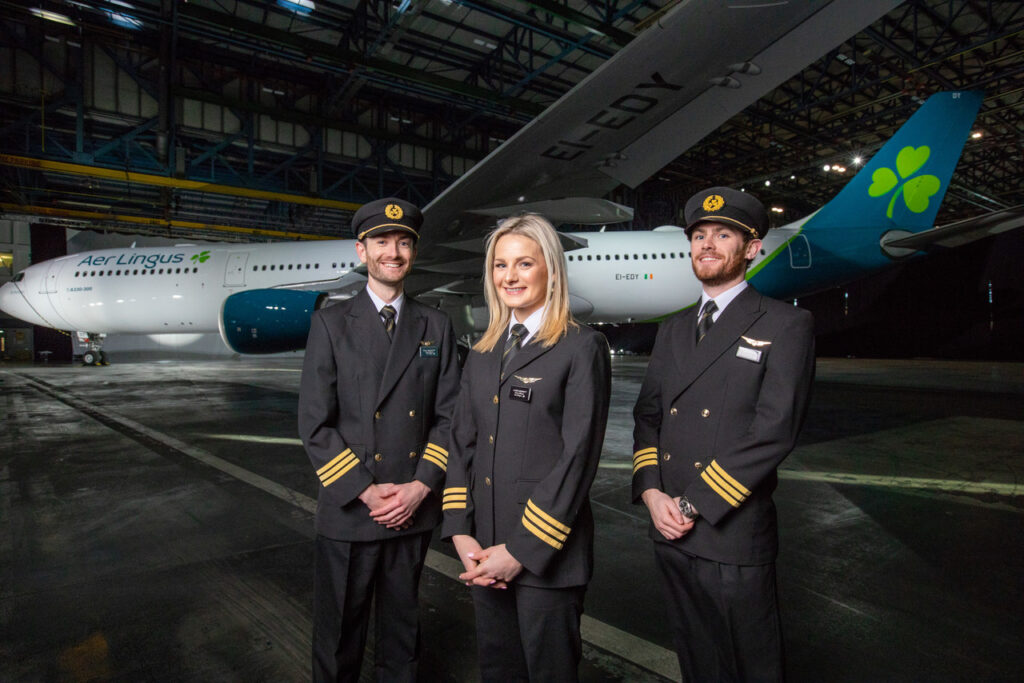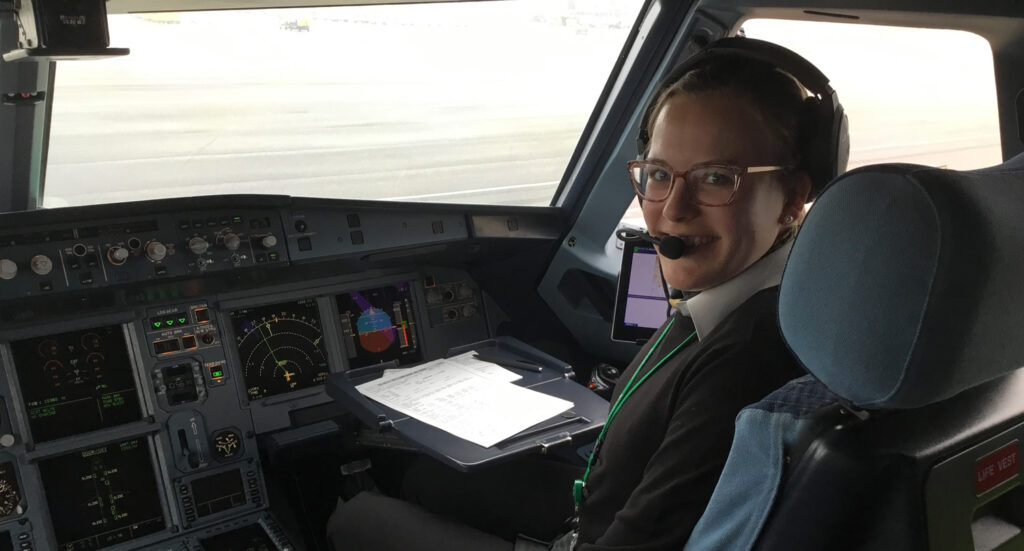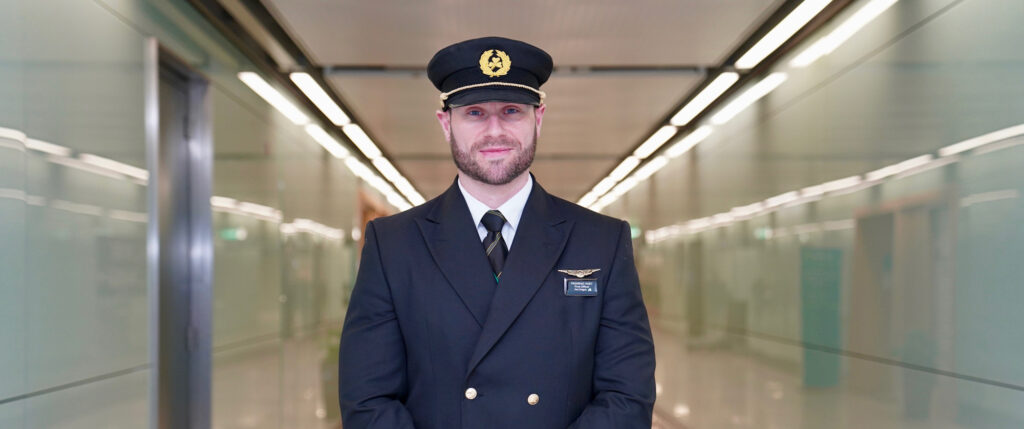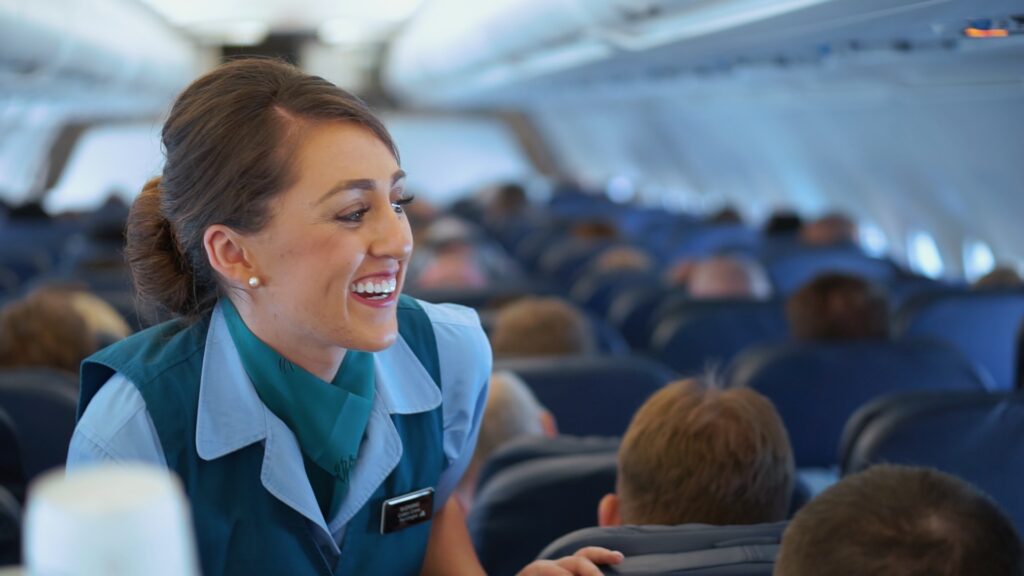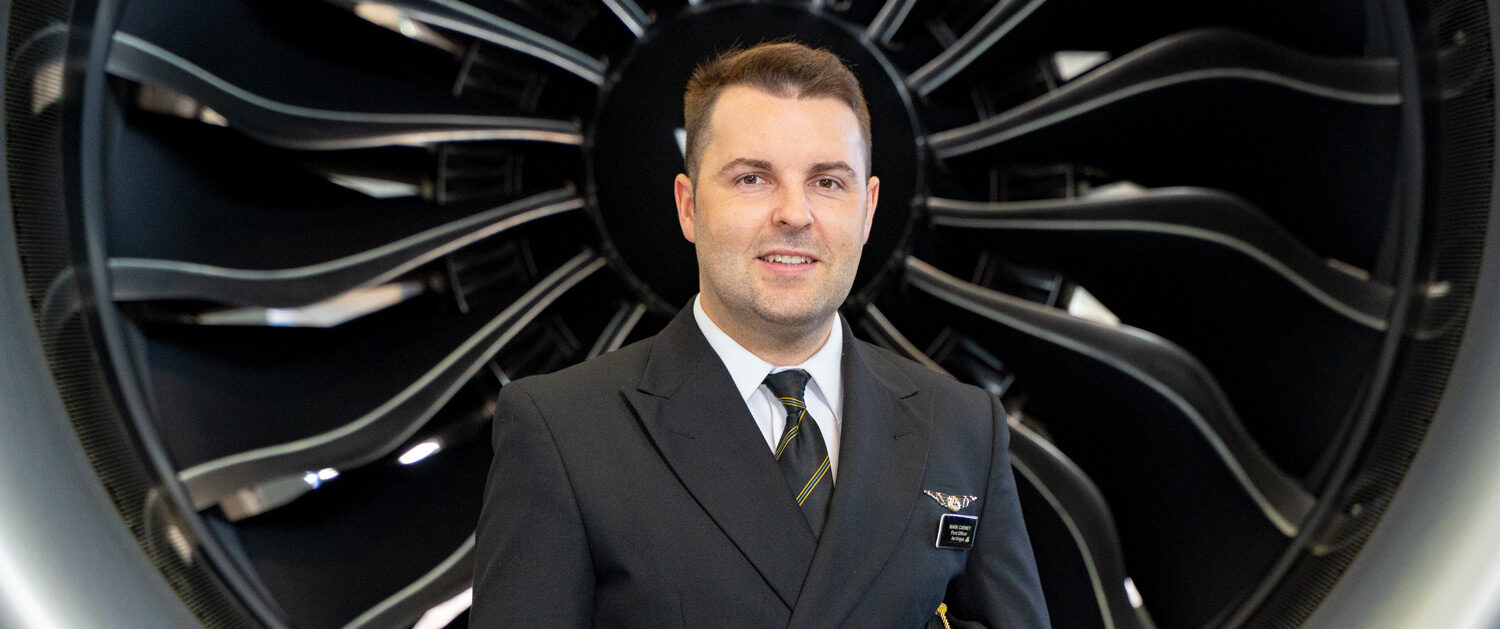
Interview with direct entry pilot Mark Carney
Mark Carney’s journey to becoming an Aer Lingus First Officer started out working as an electrician in Dublin Airport.
From keeping the lights on at the airport, Mark now flies our guests to new city lights all over Europe. With our Direct Entry Pilot programme now in full swing, we caught up with Mark for a quick Q&A.
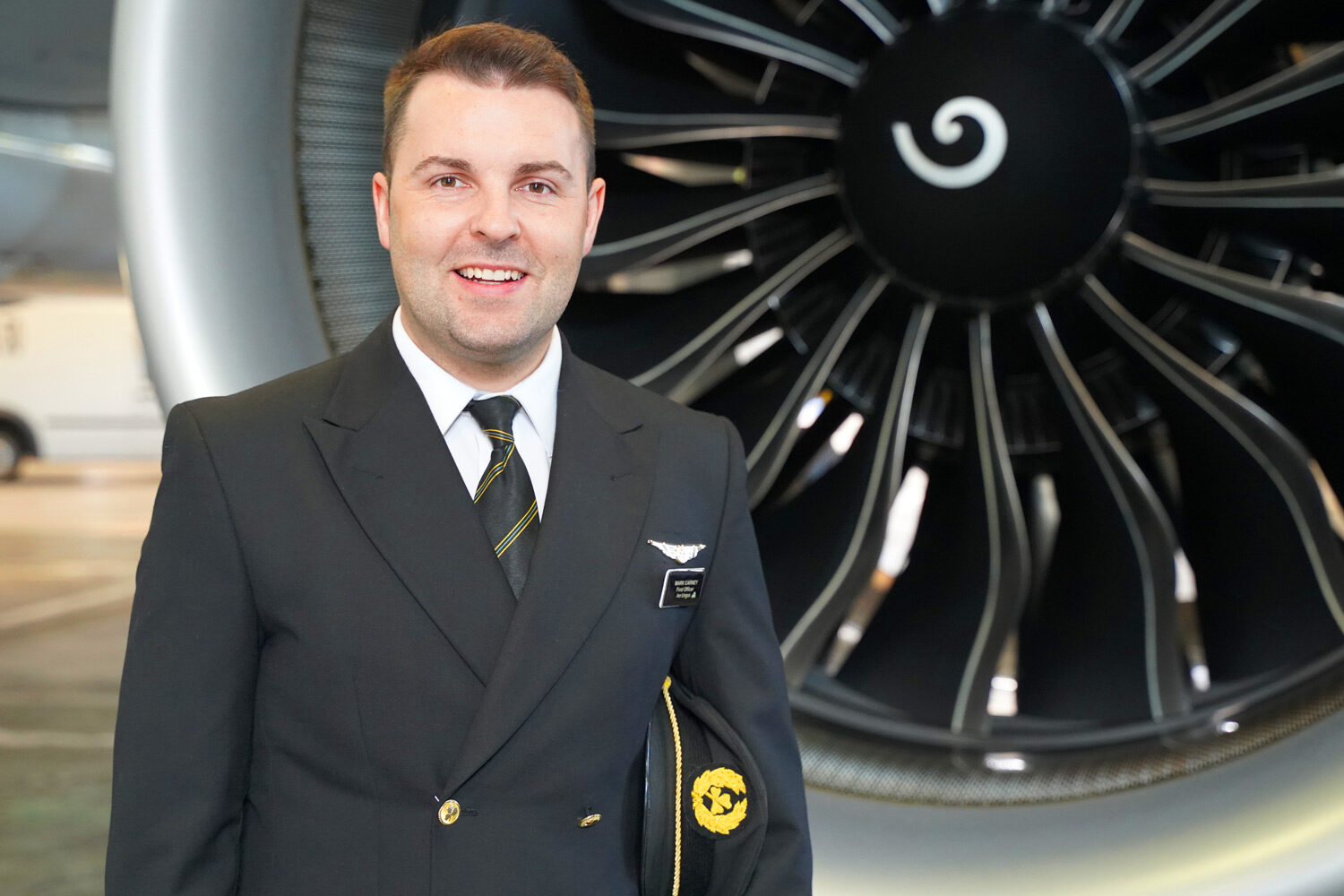
Aer Lingus (EI): Tell us about how you came to be a commercial pilot.
Mark Carney (MC): In 2011, I decided to take the plunge and begin my flight training. I already had a good job working as an electrician at Dublin Airport, so I decided that the modular flight training route suited me best. After gaining my private pilot licence with the National Flight Centre in Weston Airport, I began distance-learning study for the ATPL Theory. I built up my hours flying around Ireland, Mallorca and St. Augustine in Florida. I then completed my Commercial & Multi-Engine Instrument training with Stapleford Flight Centre in London. I finished my training in Dublin with the multi-crew cooperation course in Simtech Aviation.
Shortly after completing my flight training I was fortunate enough to gain employment as a pilot, flying the ATR 42 & 72. Finally, in February 2017, I joined Aer Lingus as a First Officer. I’m currently flying on the A320 fleet and I have recently become a type rating instructor.
EI: Why did you decide to become a pilot?
MC: As a child, I always had a fascination with anything with an engine. I still do! I grew up in Portmarnock, right under the flight path of runway 28 and spent most of my time in school looking out the window at aircraft on approach, imagining what it must feel like to be at the controls. I wanted a job that was different every day and posed challenges. There was also that romantic sense of freedom that attracted me to the job. It’s an amazing feeling when you lift off from Dublin on a wet and windy December morning and break through the cloud top to see the sunrise.
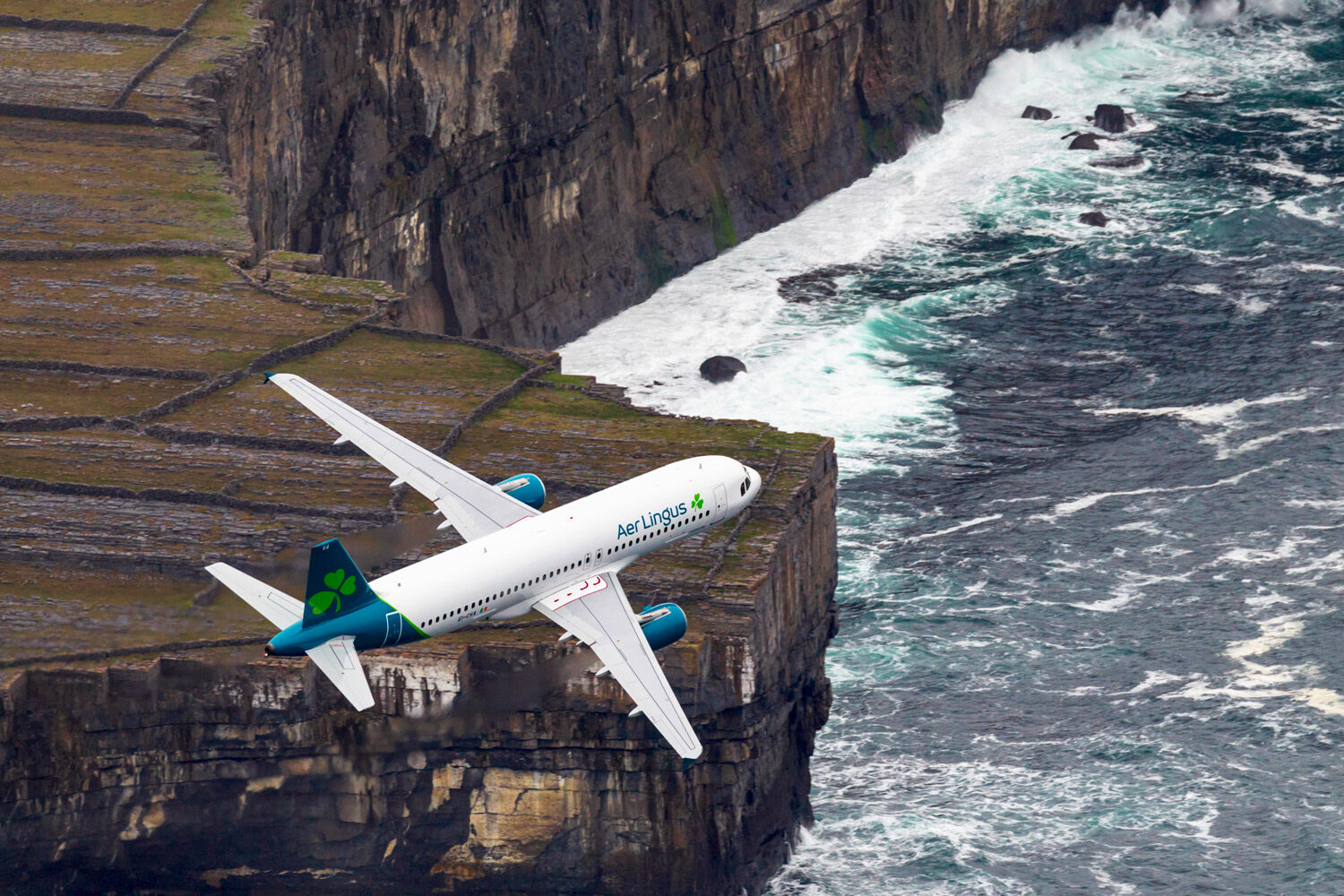
EI: What attracted you to a career in Aer Lingus?
MC: There are many reasons. The Aer Lingus brand is known worldwide for our excellent service, friendly staff and impeccable safety record. We recently retained our Skytrax 4-star status. It’s nice to be a part of a team that can achieve these things.
With the growing route network and addition of the A321neo to our fleet, it gives pilots the chance to fly the latest technology to a variety of destinations in Europe and North America. All while keeping on a fixed roster pattern of five days on, three days off.
From the moment you join Aer Lingus as a First Officer, plans are already being put in place for your transfer to the left seat. The training is excellent and there’s a very structured command development process which begins as early as six months after the initial line check. This, combined with the wealth of experience that existing Captains have and are always willing to share, means that every First Officer is given the best opportunity to become a Captain.
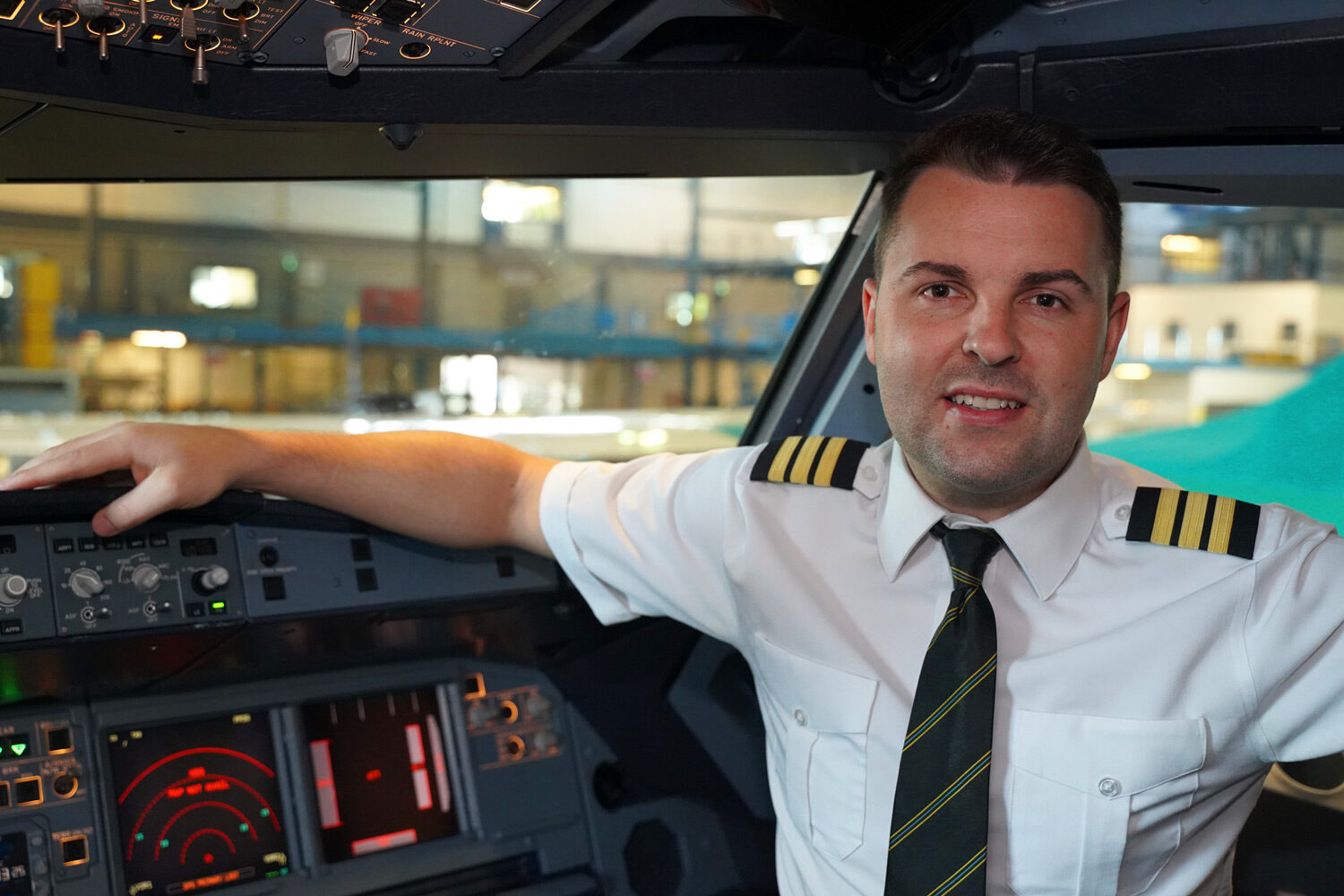
EI: What aircraft type do you fly?
MC: I currently fly the A320, A321 and the A321neo. I’m also a type rating instructor on the A320 family, so my time is divided between the simulator, aircraft and teaching ground school.
My focus on my role as an instructor on the A320 has meant that I’ve not yet started flying the A330 but it’s definitely something I’d like to do in the future. There’s lots of opportunity within the Flight Operations team to help you grow professionally.
EI: Can you tell us about your lifestyle in Ireland?
MC: When I’m not at work, I enjoy mountain biking, kitesurfing and socialising with friends. I’m also a big fan of the sun and travelling (who isn’t?), so I try to use our excellent staff travel privileges as much as I can on my days off and during annual leave.
EI: How did you find the application process?
MC: The Direct Entry Pilot application process is very straightforward. I went through the process in late 2016 and it began with a series of online assessments which ranged from testing hand-eye coordination skill and memory ability, to what type of personality traits you have. After that, I was called for an assessment day at Dublin Airport which involved a group exercise & panel assessment, followed by an interview with a pilot and a HR representative. The following day I was called for a simulator assessment, and one week later I received a call to say that I had been successful.
EI: How do you see your career progression over the next 3-5 years?
MC: With the rate of expansion happening at the moment, the time to progress to Captain is considerably less than what it traditionally has been. I’ve completed two out of the five phases of the command process, and all going well, I hope that within the next 3-5 years I will have passed the remaining three phases and be in the left seat.
EI: Do you have any advice for potential candidates?
MC: All the assessors and interviewers you meet during the recruitment process do their best to put you at ease. My advice for anyone going through the Direct Entry Pilot recruitment process is to be yourself, research the company and if it doesn’t work out this time then take it as a learning experience for the next time.
To learn more about our direct entry pilot careers click here. The direct entry pilot recruitment campaign is open until, 7 November 2019.
(This article was updated on 30 October to reflect a new closing date for applications.)
